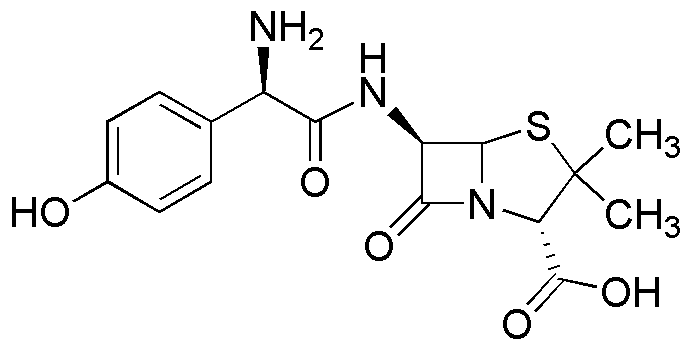Amoxicillin is widely utilized in research focused on
- Antibiotic Treatment: It is primarily used to treat a variety of bacterial infections, including respiratory tract infections, urinary tract infections, and skin infections, making it essential in both clinical and outpatient settings.
- Pediatric Medicine: Due to its effectiveness and safety profile, it is commonly prescribed for children, helping to combat infections while minimizing side effects.
- Combination Therapy: Amoxicillin is often used in combination with other antibiotics or medications to enhance treatment efficacy, particularly in cases of resistant bacterial strains.
- Veterinary Medicine: This compound is also applied in veterinary settings to treat infections in pets and livestock, showcasing its versatility across species.
- Research Applications: In laboratory settings, it is used to study bacterial resistance mechanisms and the development of new antibiotics, contributing to advancements in microbiology and pharmacology.
General Information
Properties
Safety and Regulations
Applications
Amoxicillin is widely utilized in research focused on
- Antibiotic Treatment: It is primarily used to treat a variety of bacterial infections, including respiratory tract infections, urinary tract infections, and skin infections, making it essential in both clinical and outpatient settings.
- Pediatric Medicine: Due to its effectiveness and safety profile, it is commonly prescribed for children, helping to combat infections while minimizing side effects.
- Combination Therapy: Amoxicillin is often used in combination with other antibiotics or medications to enhance treatment efficacy, particularly in cases of resistant bacterial strains.
- Veterinary Medicine: This compound is also applied in veterinary settings to treat infections in pets and livestock, showcasing its versatility across species.
- Research Applications: In laboratory settings, it is used to study bacterial resistance mechanisms and the development of new antibiotics, contributing to advancements in microbiology and pharmacology.
Documents
Safety Data Sheets (SDS)
The SDS provides comprehensive safety information on handling, storage, and disposal of the product.
Product Specification (PS)
The PS provides a comprehensive breakdown of the product’s properties, including chemical composition, physical state, purity, and storage requirements. It also details acceptable quality ranges and the product's intended applications.
Certificates of Analysis (COA)
Search for Certificates of Analysis (COA) by entering the products Lot Number. Lot and Batch Numbers can be found on a product’s label following the words ‘Lot’ or ‘Batch’.
*Catalog Number
*Lot Number
Certificates Of Origin (COO)
This COO confirms the country where the product was manufactured, and also details the materials and components used in it and whether it is derived from natural, synthetic, or other specific sources. This certificate may be required for customs, trade, and regulatory compliance.
*Catalog Number
*Lot Number
Safety Data Sheets (SDS)
The SDS provides comprehensive safety information on handling, storage, and disposal of the product.
DownloadProduct Specification (PS)
The PS provides a comprehensive breakdown of the product’s properties, including chemical composition, physical state, purity, and storage requirements. It also details acceptable quality ranges and the product's intended applications.
DownloadCertificates of Analysis (COA)
Search for Certificates of Analysis (COA) by entering the products Lot Number. Lot and Batch Numbers can be found on a product’s label following the words ‘Lot’ or ‘Batch’.
*Catalog Number
*Lot Number
Certificates Of Origin (COO)
This COO confirms the country where the product was manufactured, and also details the materials and components used in it and whether it is derived from natural, synthetic, or other specific sources. This certificate may be required for customs, trade, and regulatory compliance.


